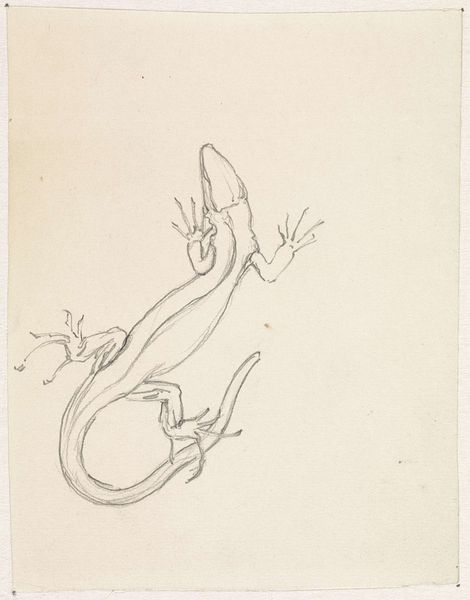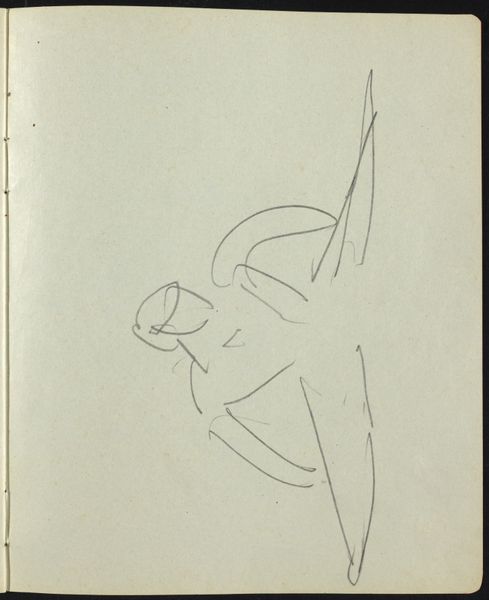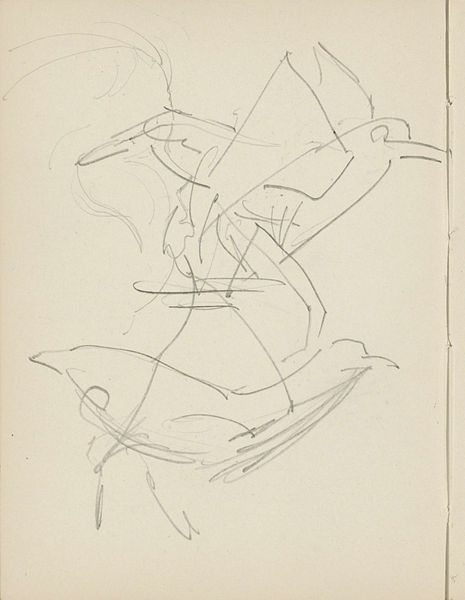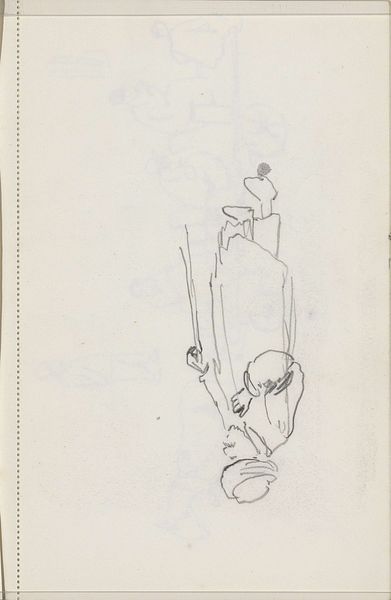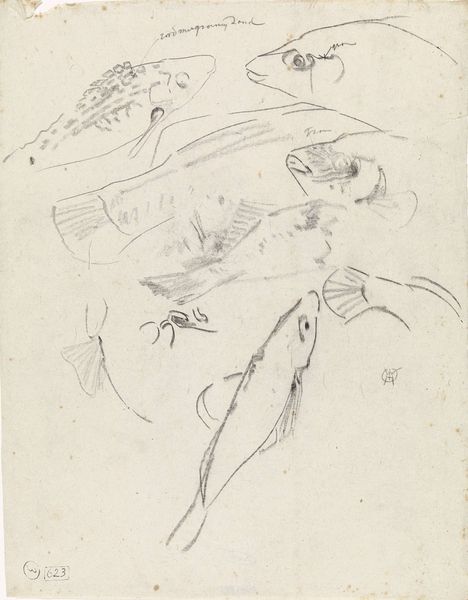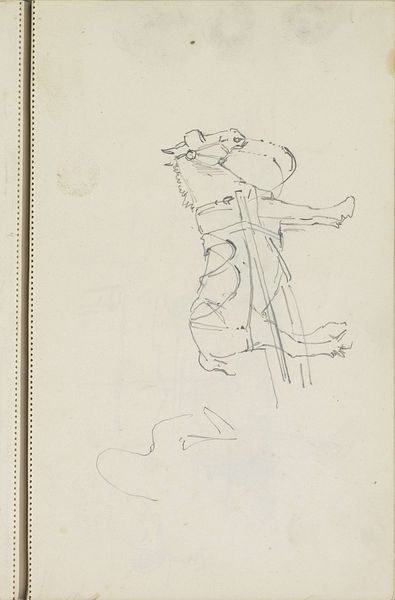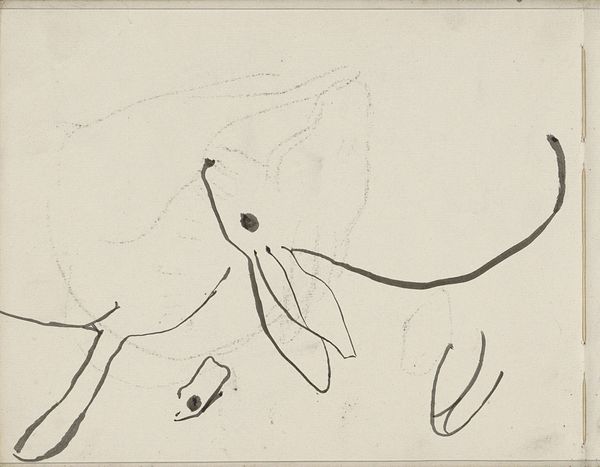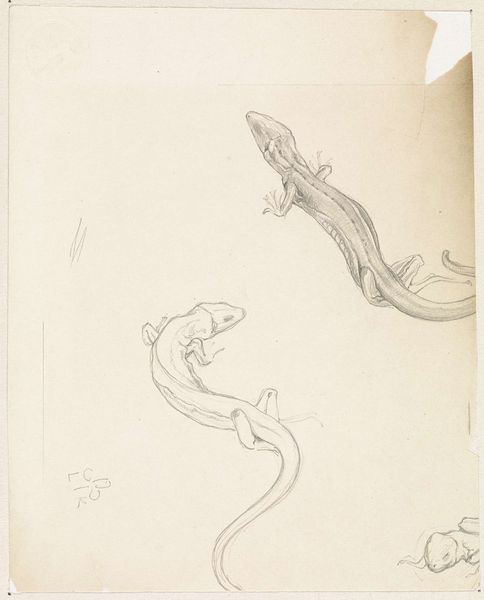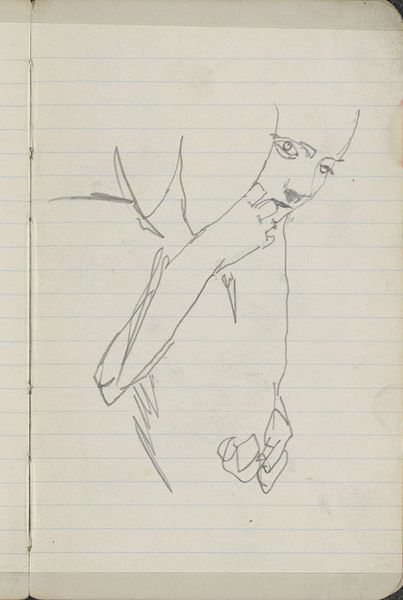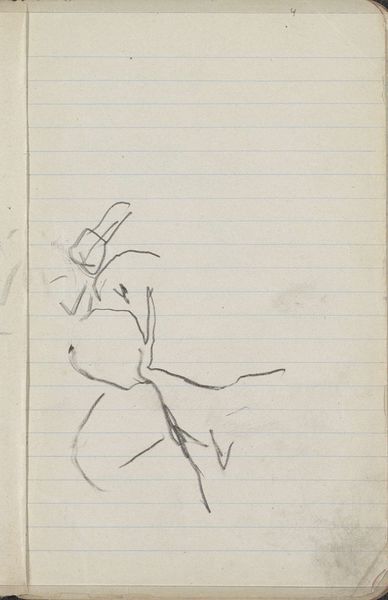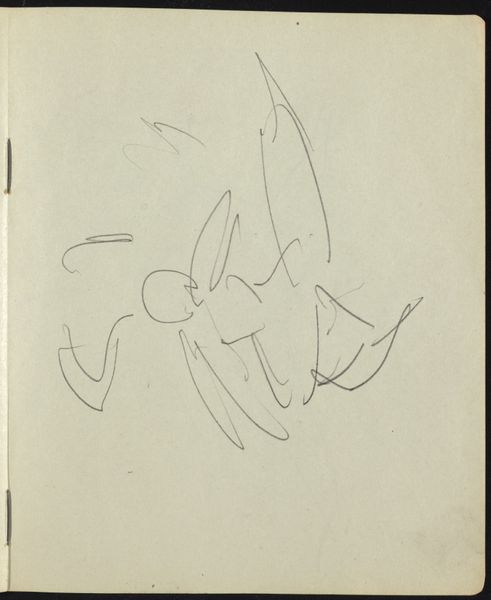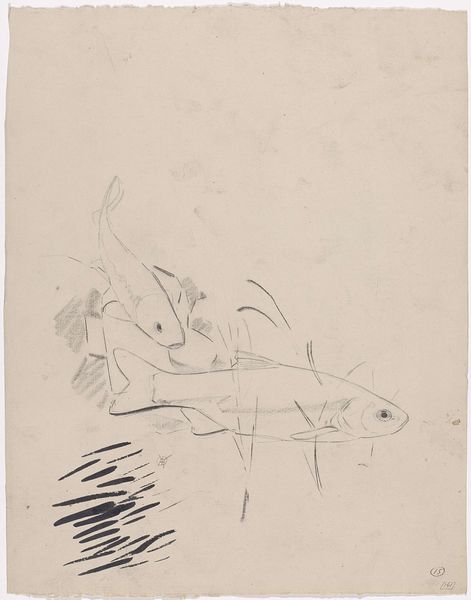
drawing, pencil
#
portrait
#
drawing
#
imaginative character sketch
#
light pencil work
#
quirky sketch
#
figuration
#
personal sketchbook
#
idea generation sketch
#
ink drawing experimentation
#
pen-ink sketch
#
pencil
#
line
#
sketchbook drawing
#
sketchbook art
#
initial sketch
Dimensions: height 205 mm, width 164 mm
Copyright: Rijks Museum: Open Domain
Curator: This is a fascinating piece by Theo Nieuwenhuis, simply titled "Kameleon." While the date is broad, ranging from 1876 to 1951, it offers a glimpse into the artist's process. Editor: Immediately, it strikes me as a playful sketch. The thin lines suggest it was quickly rendered, perhaps a fleeting thought captured on paper. It really exposes the initial mark making. Curator: Indeed. Nieuwenhuis was known for his versatility, and this drawing, executed in pencil, shows a more informal side. The subject matter, of course, references a chameleon, creatures often used as a symbol of change, adaptation, even mimicry in different cultures. Its presence within the collection also serves to further ground it into the natural historical milieu present in Dutch museums at this time. Editor: What's most interesting, from a material standpoint, is the bareness of it. It's not about elaborate finish but more the act of observation, and hand to paper connection. This feels almost like labor in its rawest form. It would be so useful to have this alongside a study of the specific pencils used during the artist’s lifetime. Curator: You highlight a valid point. The social conditions of production also extend to understanding this piece as an artist's draft, something for personal use versus for public presentation. These preliminary works became increasingly valuable as they became fetishized in private collections. Editor: Absolutely, and the marks themselves betray a certain roughness and immediacy which adds so much charm. Also, this work really invites conversations about craftsmanship, the kind that asks us to question what labor makes up 'good' art. The raw materials used matter. Curator: Well, it's certainly a provocative sketch that can serve to raise critical insights. And in many ways, I do enjoy it for its ability to unveil social and cultural themes beyond that. Editor: Agreed. Nieuwenhuis leaves us with questions about artmaking, value, and the constant tension between initial idea and final form.
Comments
No comments
Be the first to comment and join the conversation on the ultimate creative platform.
